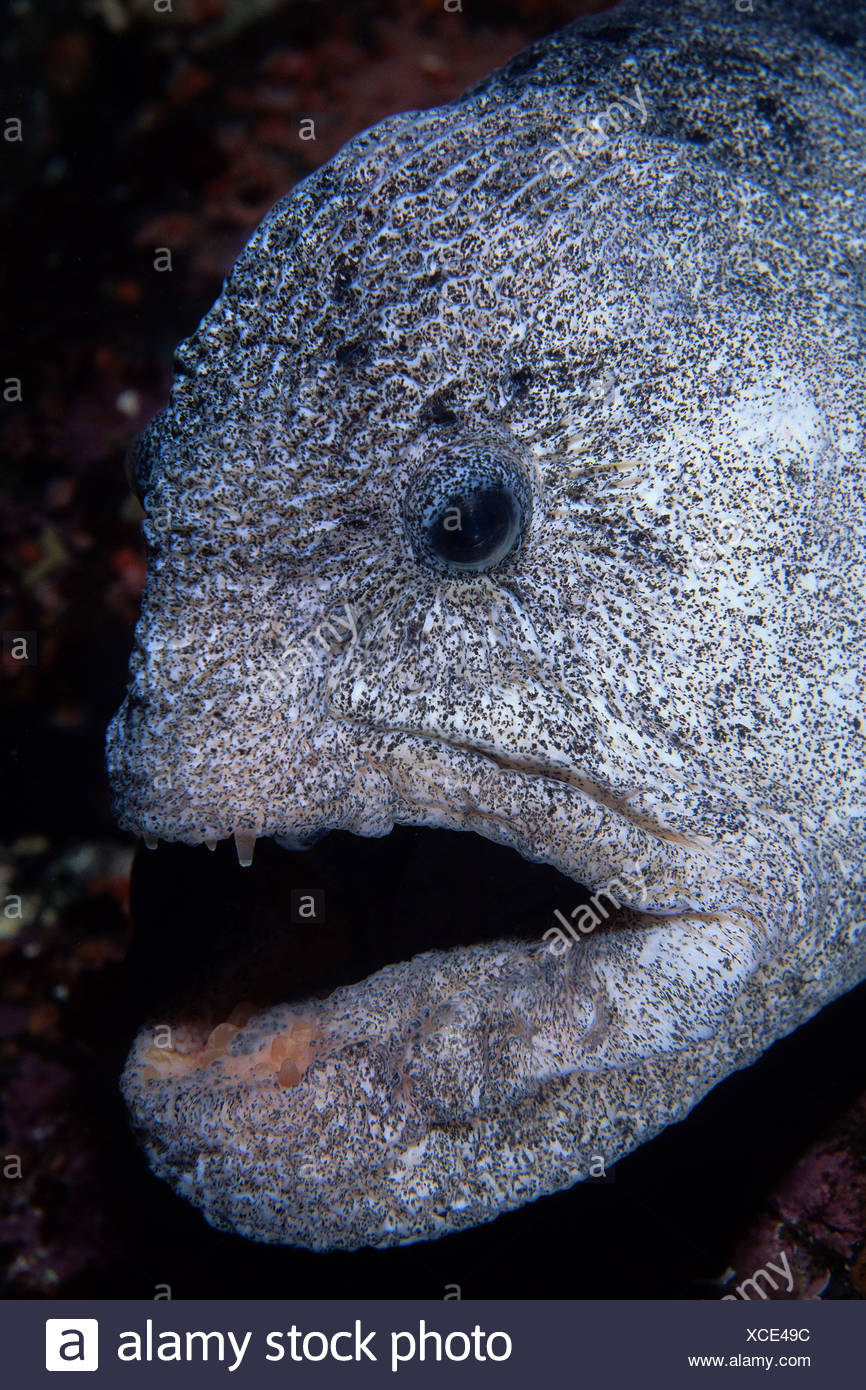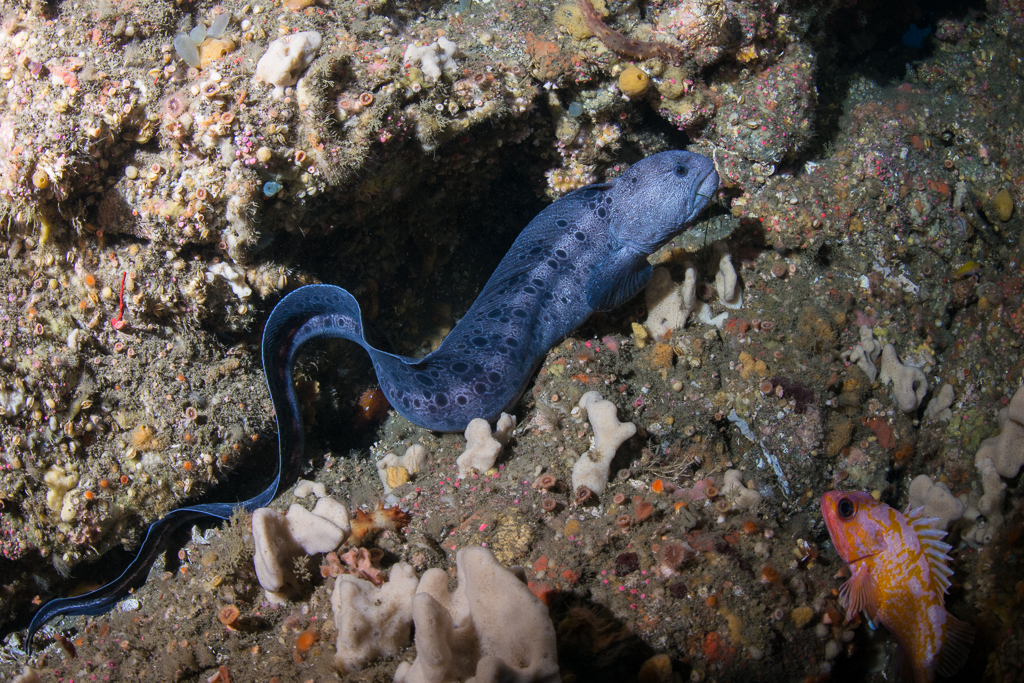
The Atlantic wolfish feeds primarily on shellfish and crustaceans using its powerful teeth and jaws to crunch through the shells of these creatures.

They have four to six prominent fang-like teeth at the front of their mouth, with several rows of blunt, crushing teeth further back. The name of this species comes from their teeth which resemble those of a wolf. They are usually solitary fish, although, as they are not territorial, rocky areas containing a large number of suitable hiding places may contain several Atlantic wolffish. This species prefers fairly deep water of at least thirty metres and favour rocky and broken ground which provides them with cracks and crevices to hide inside. Habitat, Feeding and Behaviour The Skull of an Atlantic Wolffish, showing the teeth and powerful jaws. They are found across the Atlantic in Icelandic and Greenlandic waters and are present along the eastern coastline of the United States and Canada. They are at the edge of their southwards distribution in along the coast of Portugal and are found in limited numbers in the western Mediterranean. Their range extends through the North Sea and the waters surrounding the British Isles and down to the Atlantic coasts of France and Portugal. In European waters they are found from the cold waters of the Barents and Kara Sea through the Norwegian Sea and the western parts of the Baltic Sea. Distribution Worldwide distribution of the Atlantic Wolffish.Ītlantic wolffish are, as the name implies, found across the North Atlantic. It is edible and has commercial value, although its many names (and the fact that it is often only sold as pre-prepared fillets) mean that few members of the public are aware of the species they are consuming when they eat this fish. A number of darker bars run down the flanks.Ītlantic wolffish are somewhat fearsome-looking species which has sadly had its numbers depleted over recent decades, meaning it is now a very rare catch for the shore angler. Unusually blueish colour, although this can vary to brownish, greyish or other colours. Eyes are small and the large mouth is filled with both sharp teeth and crushing molar teeth. The anal fin is around two-thirds the length of the dorsal. A single dorsal fin is long and runs the whole length of the body.

In European waters they are found from Scandinavian waters down to the Mediterranean Sea. Distribution: Found on both sides of the North Atlantic Ocean.

When sold as a food fish it may be known as Scotch Halibut, Woof or Scarborough Woof. Also known as: Wolf Eel, Sea Wolf, Sea Cat, Devil Fish, Ocean Catfish, Atlantic Catfish, Woof Fish.


 0 kommentar(er)
0 kommentar(er)
